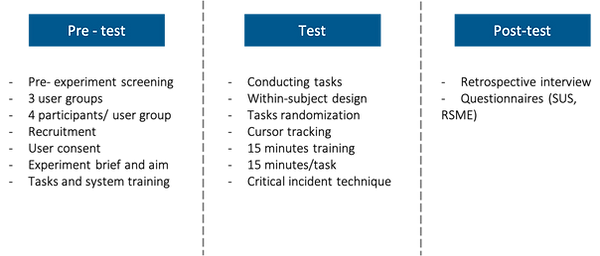top of page

Usability Design for Philips Picture Archiving & Communication Storage system (PACS)
Human Factors Engineering: Prototyping and usability testing for the product stack in agile setting
Tools used: Invision, Sketch, Optimalsort, Confluence, Miro
[NDA]: Due to non-disclosure agreement signed with the project stakeholders, only limited work is shared.
TASK
-
Understanding business, system and user requirements
-
Framing the strategy for usability design activities in line with agile release train
-
Analysing usage error risks and hazards with design mitigation proposition
-
Validating design mitigations through usability testing
USER RESEARCH

As part of experience design, other than understanding the product system, main user groups were also studied - technologist, administrator and radiologist.
User personas chart was generated.
Empathising with the user - by studying user's main motivations and challenges, experience was designed for the users by embedding the user requirements in the interface.
USAGE ERROR RISK ANALYSIS

Based on the business requirements, task analysis, perception - cognition - action (PCA) analysis and usage error - hazard analysis was done.
This also covered going through the previous product releases' usability testing results and heuristic evaluation.
Usage error risk prone tasks or sub-tasks were mitigated by providing a suitable design element in the interface.


USABILITY DESIGN STRATEGY


With each sprint in agile release train, business requirements were studied and design strategy was framed following IEC 62366 human factors engineering.
PROTOTYPE DESIGN & TESTING
To validate the design mitigations proposed, different prototypes were designed incorporating the business and user requirements.

The design mitigations to avoid usage error and subsequent hazard were validated by formative usability testing.
Different methods like geurilla usability testing and testing in lab environment were explored for usability validation.
Summative validation was not conducted because of the following reasons:
-
The program development is limited to a minimal feature introduction and modification to the existing user interface.
-
All the product requirements (Marked as Safety = YES) and user interface of the added software feature specific to the product were assessed and determined that no potential Hazard-related use scenarios exist.
-
All the product complaints (Post production Information) were reviewed to identify the cases of USE ERROR that could result in a HAZARDOUS SITUATION or those cases where field information suggests HAZARDS or HAZARDOUS SITUATIONS that could have been caused by inadequate USABILITY. The inspection determined no occurrence of such cases.
-
All the Usability related hazards identified in the product risk management matrix were reviewed and determined that the existing risk control measures are adequate. The same were determined as part of formative testing planned for the program.
bottom of page